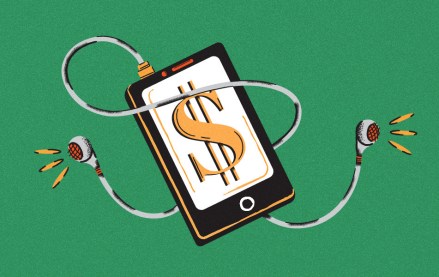
Publishers across the board are scrambling to cement their native ad strategies, and Hearst is no different.
Yesterday, it launched content ad campaigns for Lancôme on MarieClaire.com. The Pinterest-like ad is an interactive selection of images, skin care tips and blog content from 12 bloggers. Users will roll over a portrait of each blogger to reveal #bareselfie images of the bloggers taken after using the Lancôme product, quotes from their individual “skin stories,” or further info about the product.
The ad content is promoted on Marie Claire with units that show thumbnail photos of the bloggers under the headline “Beauty Bloggers Take a #BareSelfie,” along with a notation it is “presented by Lancôme.” The campaign will run in various areas of MarieClaire.com through Feb. 14.
The campaign is launching six months after Hearst took its first steps into the native ad fray in June, when it introduced five homegrown products for mobile, social media and video. The Lancôme campaign uses what Hearst is calling a Trend Collage, which is geared toward image-heavy fashion campaigns.
In creating the line up, Hearst is following a similar path to its peers. At The New York Times, while much attention has focused on its paid-posts product, the company is banking as much on an “organic” ad strategy that more tightly weaves ads within the editorial flow.
These types of approaches, almost a necessity in a historically rough time for ad sellers, have been decried by critics as a crumbling of the walls between advertising and editorial. Hearst shows no such squeamishness. In fact, Hearst CRO Todd Haskell said, “At times, our editorial team will collaborate or contribute to branded content campaigns,” though staffers can always say no if they wish.
Last September, Harper’s Bazaar ran another Trend Collage campaign to promote the Ugg Collection by Nordstrom. Users clicking on the ad, running on the fashion channel, were brought to a gallery of Ugg’s shoes on a Harper’s Bazaar page headlined “12 Cozy-Chic Shoes You Need Now.”
The ad opened to a product description page and allowed consumers to share the content and purchase the product. Initial tests on Hearst’s native content module produced a click-through rate between 1 and 1.5 percent compared to the industry average of .1 percent on traditional display ads, according to Hearst.
Hearst has also had success incorporating native ads into their daily newsletter “The List,” where products are presented in a similar layout as Harper’s editorial picks. Brands like David Yurman, which had yet to experiment with traditional branded content, have jumped at the chance to take advantage of the unit, according to Haskell.
“The unit needs to be transparent to the reader, but should not be in a position traditionally held by an ad,” said Haskell. “Since these programs require a close collaboration between our teams and those of our clients, we require substantial spending commitments for each campaign that is launched.”
More in Media

BuzzFeed’s sale of First We Feast seen as a ‘good sign’ for the M&A media market
Investor analysts are describing BuzzFeed’s sale of First We Feast for $82.5 million as a good sign for the media M&A market — which itself is an indication of how ugly that market had become.

Media Briefing: Efforts to diversify workforces stall for some publishers
A third of the nine publishers that have released workforce demographic reports in the past year haven’t moved the needle on the overall diversity of their companies, according to the annual reports that are tracked by Digiday.

Creators are left wanting more from Spotify’s push to video
The streaming service will have to step up certain features in order to shift people toward video podcasts on its app.








